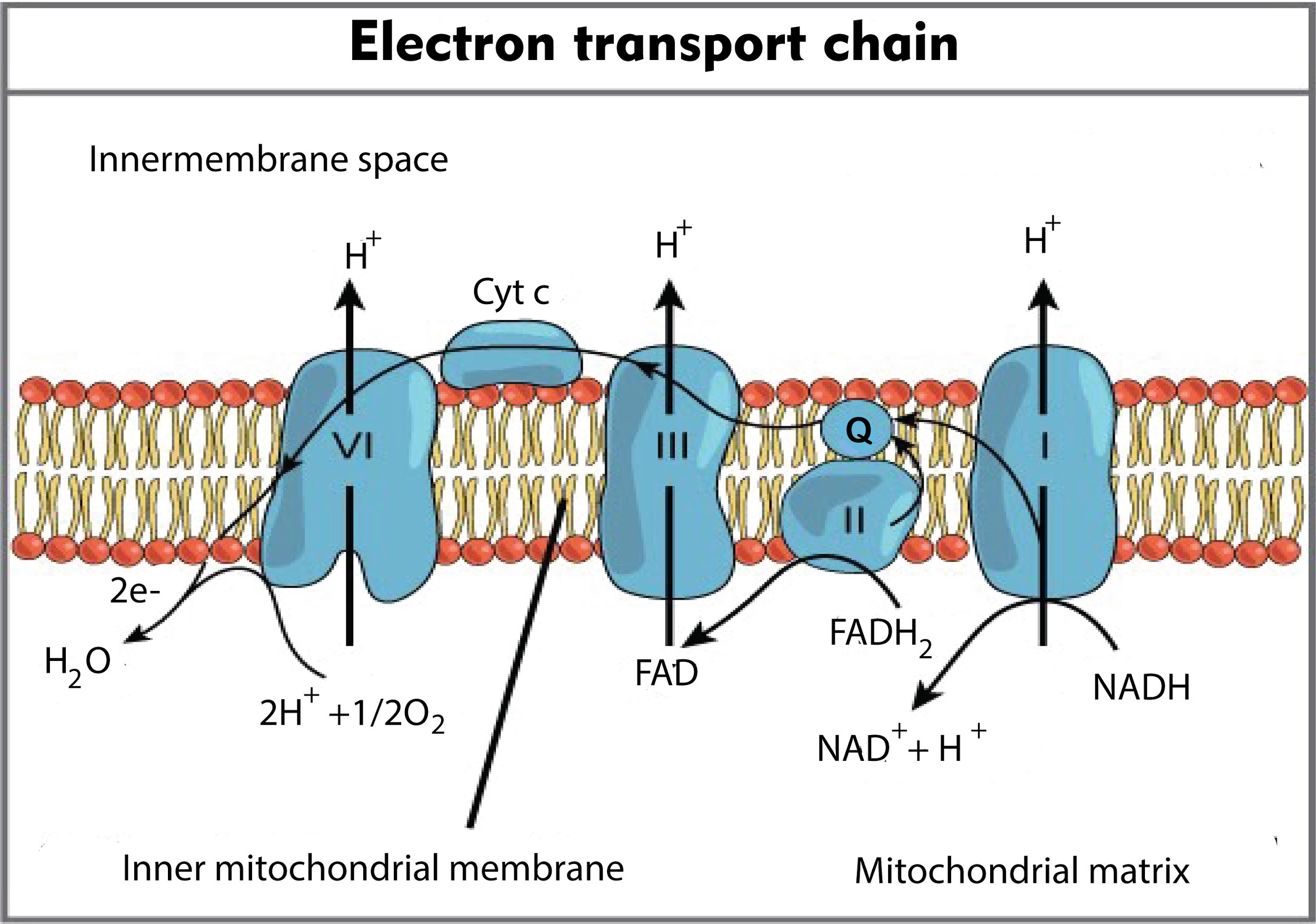
NADH and ${ FADH }_{ 2 }$ carry high energy electrons to the electron transport chain in cellular respiration. NADPH carries high-energy electrons to the electron transport chain in photosynthesis.
What are the terminal electron acceptors in the electron transport chain of cellular respiration and photosynthesis, respectively?
(a) Oxygen, ${ NADP }^{ + }$
(b) Carbon dioxide, ${ NAD }^{ + }$
(c) Oxygen, ATP
(d) Water, oxygen
Answer
453.9k+ views
Hint: It's the last segment of cellular respiration and is the main piece of glucose digestion that utilizes air oxygen. Oxygen continuously diffuses into plants; in animals, it enters the body through the systema respiratorium.
Complete answer:
1. During respiration, the electron transported through the series of co-enzymes and cytochromes is accepted by oxygen and thus becomes the terminal acceptor of the electron.
2. In photosynthesis, NADP is reduced to NADPH by accepting the electron from Photosystem1 (PS1). Thus becoming the terminal electron acceptor.
Additional Information: The electron transport chain is that bit of cellular respiration that utilizes free oxygen on the grounds that the last electron acceptor of the electrons faraway from the moderate mixes in glucose catabolism. The electron transport chain includes 4 large, multiprotein structures introduced inside the internal mitochondrial layer and two minimal diffusible electron carriers moving electrons between them. The electrons are talented in a progression of redox responses, with a little measure of free energy utilized at three focuses to move hydrogen particles over a layer. This cycle adds to the angle used in chemiosmosis. The extent of free energy of the electrons drops from about 60 kcal/mol in NADH or 45 kcal/mol in ${ FADH }_{ 2 }$ to about 0 kcal/mol in water.
So the correct answer is ‘Oxygen, ${ NADP }^{ + }$ ’.

Note: The electron transport chain may be a series of molecules that accept or donate electrons easily. By moving bit by bit through these, electrons are moved a particular way over a film. The movement of hydrogen ions is including this. This suggests that when electrons are moved, hydrogen ions move too.
Complete answer:
1. During respiration, the electron transported through the series of co-enzymes and cytochromes is accepted by oxygen and thus becomes the terminal acceptor of the electron.
2. In photosynthesis, NADP is reduced to NADPH by accepting the electron from Photosystem1 (PS1). Thus becoming the terminal electron acceptor.
Additional Information: The electron transport chain is that bit of cellular respiration that utilizes free oxygen on the grounds that the last electron acceptor of the electrons faraway from the moderate mixes in glucose catabolism. The electron transport chain includes 4 large, multiprotein structures introduced inside the internal mitochondrial layer and two minimal diffusible electron carriers moving electrons between them. The electrons are talented in a progression of redox responses, with a little measure of free energy utilized at three focuses to move hydrogen particles over a layer. This cycle adds to the angle used in chemiosmosis. The extent of free energy of the electrons drops from about 60 kcal/mol in NADH or 45 kcal/mol in ${ FADH }_{ 2 }$ to about 0 kcal/mol in water.
So the correct answer is ‘Oxygen, ${ NADP }^{ + }$ ’.

Note: The electron transport chain may be a series of molecules that accept or donate electrons easily. By moving bit by bit through these, electrons are moved a particular way over a film. The movement of hydrogen ions is including this. This suggests that when electrons are moved, hydrogen ions move too.
Recently Updated Pages
Oxidation number of N in NH4NO3is A3 B+5 C3 and +5 class 11 chemistry CBSE

Write the main reasons for the stability of colloidal class 11 chemistry CBSE

One difference between a Formal Letter and an informal class null english null

Class 11 Question and Answer - Your Ultimate Solutions Guide

Master Class 11 Business Studies: Engaging Questions & Answers for Success

Master Class 11 Accountancy: Engaging Questions & Answers for Success

Trending doubts
The reservoir of dam is called Govind Sagar A Jayakwadi class 11 social science CBSE

What problem did Carter face when he reached the mummy class 11 english CBSE

Proton was discovered by A Thomson B Rutherford C Chadwick class 11 chemistry CBSE

In China rose the flowers are A Zygomorphic epigynous class 11 biology CBSE

What is Environment class 11 chemistry CBSE

Nucleolus is present in which part of the cell class 11 biology CBSE




